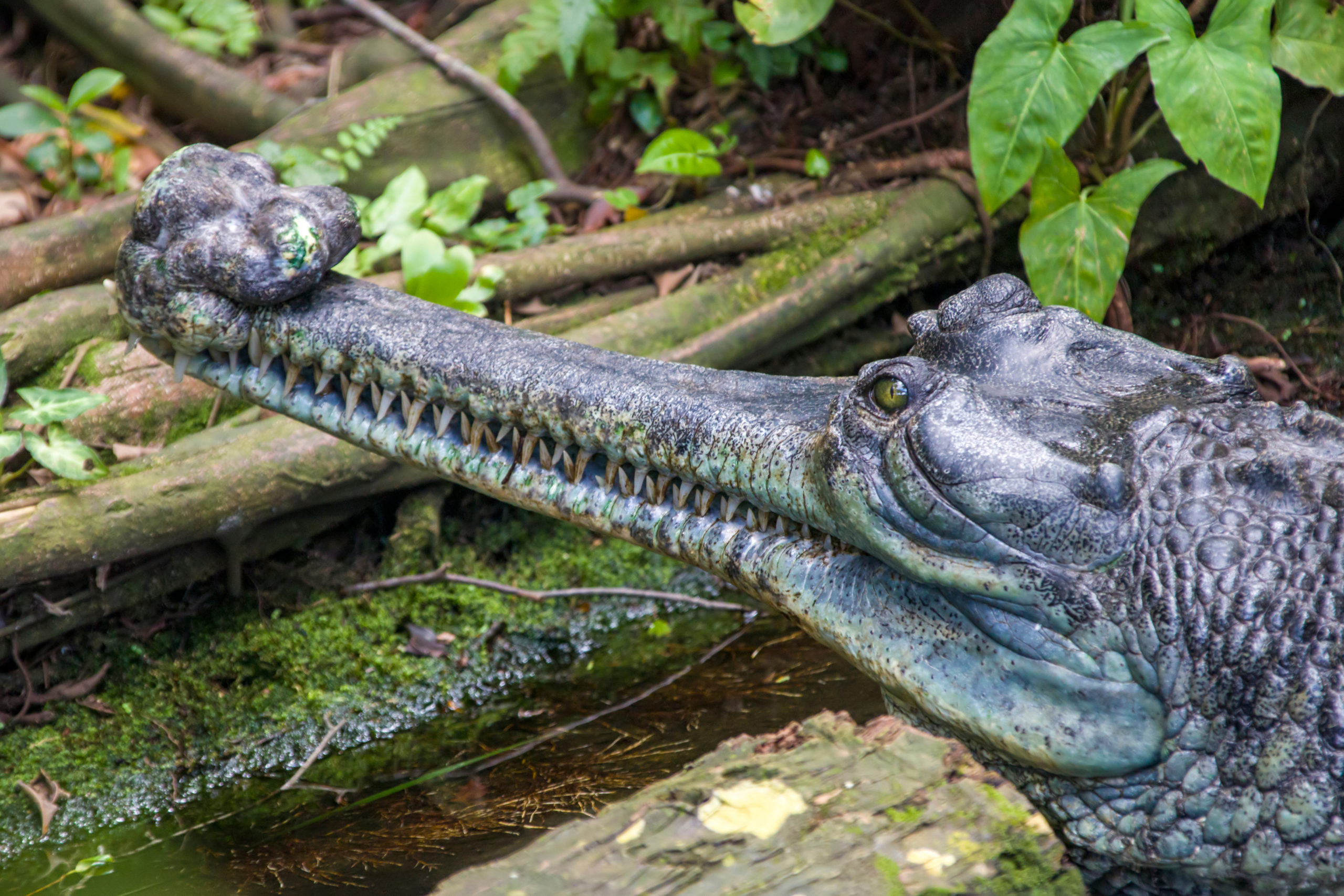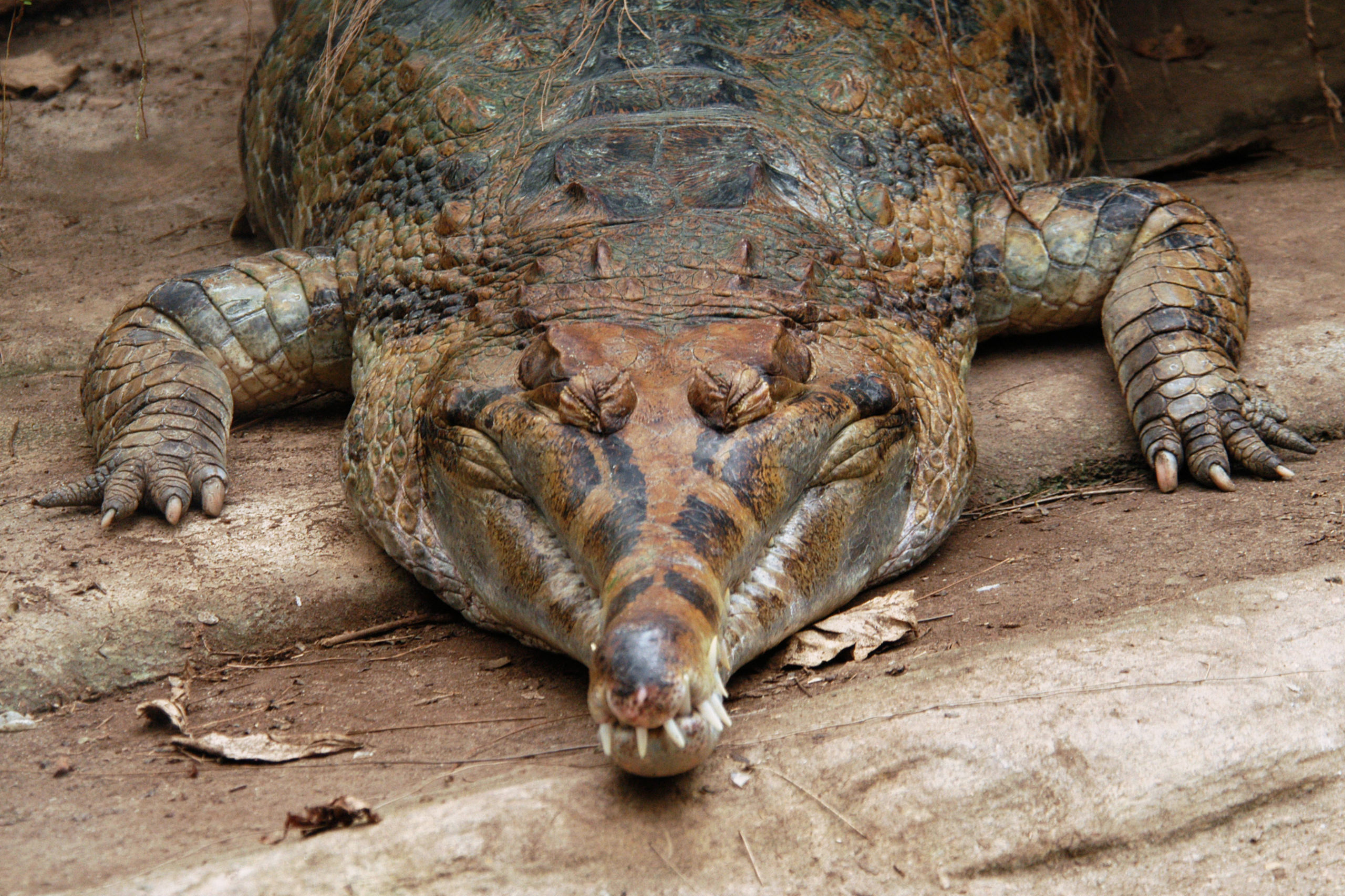Weird & Wonderful Vol 10: False gharial [Tomistoma schlegelii]
Gharials, or Gavalidae, are a sister family to the Crocodylians. These fish-eating specialist reptiles are native to India, and are now sadly critically endangered under the IUCN. The lesser known genus that shares this family, Tomistoma, or false gharials, are on their way to the same status without dedicated action.

Male gharial with distinctive nasal “ghara” – the most distinctive sexual dimorphism seen in a crocodilian species. Tomistoma lack this trait.
Tomistoma schlegelii is another strange looking crocodile with an extremely narrow snout. It shares this trait with true gharials as an adaptation for catching fish. They have however also been observed as having a generalist nature, snatching just about whatever they can that comes near – even small primates.
Tomistoma are found along the Malaysian Peninsula and into Indonesia. Their range was larger, but populations have declined greatly due to habitat loss (deforestation and water drainage), as well as being hunted for their skin and meat. Being quite formidable in size, locals are wary of human-animal contact with this species, and there have been some cases of fatalities when these contacts go awry.
The species is officially listed as vulnerable by the IUCN, with an estimation of 2,500 – 10,000 individuals in the wild at present. A lot of their natural history is also not known, such as their reproductive seasons and habits.

Tomistoma are actually considered ‘true’ crocodiles, and research into their phylogeny suggests their shared traits with gharials (such as fish specialisation) is due to homoplasy (traits that are gained and lost during separate evolutionary events).
They are also quite a large species, with males reaching reported sizes of 5m long and more than 200kgs.
There is some good news for these interesting reptiles, though. Listed under CITES Appendix I, both the Malaysian and Indonesian governments have taken steps to protect this species. There is some friction where locals fear attacks – of which there has been a few records in the past where humans and these crocodiles come into contact.
The main issue seems to be genetic isolation due to their scattered distribution, but captive breeding projects should help to resolve this issue for future efforts.
One such facility is Crocodiles of the World, located in Oxfordshire, which is home to a pair of Tomistoma which have successfully bred and contributed to their conservation.
We visited Crocodiles of the World and featured their work in our January 2021 issue of EK, especially with another endangered species – the Siamese crocodile. We also made a feature video which you can see here!
Weird & Wonderful Vol 10: False gharial [Tomistoma schlegelii]
Related Posts
Weird & Wonderful Vol 11: Feather Stars [Crinoids]
05/05/2021
Read about the unusual feather stars - Echinoderms that start life on a stalk, like a lily, and become mesmerising drifting adults.
Weird & Wonderful Vol 9: Sex Chromosomes Overridden in Bearded Dragons [Pogona vitticeps]
04/21/2021
Perhaps not a weird, but definitely a wonderful species, some insights have been uncovered on the complex genetic and environmental mechanisms that affect the reproductive systems of beardies.


Let's Get Social